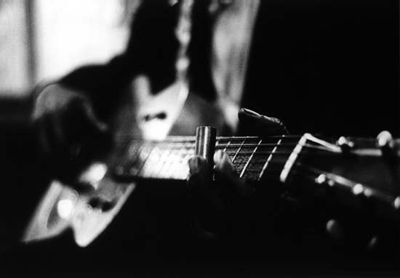|
Playing the Blues Scale
Let's begin with what the notes are. based off the major scale degrees, this scale is constructed from the first, flatted third, fourth, sharped fourth, fifth, flatted seventh, and up to octave above the root of the key. In the key of C it would be C, Eb, F, F#, G, Bb, C. In the key of E it would be E, G, A, A#, B, D, E. Pretty easy right? Once you know the notes it's time to begin coming up with some interesting melodies. This is the part that can take a lifetime to master. Making "good" melodies is a nearly ineffible artform in itself so let's begin. One shouldn't merely play a constant string of random notes from the blues scale (unless that is your artistic intent), melodies are broken up into groups of notes called "phrases". Phrases are similar to sentences in language. There are certain aspects to consider and experiment when playing melodic phrases, the length of the phrases, the contour of the phrases, whether notes are repeat or are consecutive or if they jump around, the length of the individual notes, how the rhythm relates to the beat of the music, which notes fall on which beats, are there repeating patterns in with the phrase, etc.. It is good to have a start and a ending to each phrase. Also, leaving space between your phrases (between a beat and a few measures) helps the ear digest what it just heard. When stringing phrases together, sometimes it is good to play contrasting concepts such as playing a couple short phrases followed by a long phrase or playing something really loud and then really soft, or playing something fast and crazy and then play something slow and more relaxed. This is where your artistic individualism can shine. Finally, play with EMOTION and EXPRESSION, this is what makes melodies come from the depths of the soul and is really what the blues scale is all about. If you feel the emotion you're communicating it will come across in you're playing. It helps to LISTEN to as much great music as you can and think about what the melodies, phrases, and emotions are. Take aspects from your favorite melodies and start to apply them to your own. The 25 Best Jazz Albums of All Time is a great place to start! Once you can play the blues scale, next learn to play it over a
12 bar blues chord progression,
|
